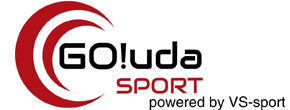A free software is a bit of computer code that can be used not having restriction by the first users or by other people. This can be done by copying the program or altering it, and sharing that in various techniques.
The software liberty movement was started in the 1980s simply by Richard Stallman, who was concerned that proprietary (nonfree) software constituted a form of oppression for its users and a violation with their moral privileges. He created a set of 4 freedoms intended for software being considered free:
1 ) The freedom to alter the software.
This is actually most basic of the freedoms, and it is the one that the free application useful to its users. It is also the freedom that allows a team of users to share their modified version with each other as well as the community at large.
2 . The liberty to study this program and know the way it works, in order to make becomes it to match their own intentions.
This flexibility is the one that the majority of people imagine when they notice the word “free”. It is the liberty to upgrade with the program, so that it will what you want this to do or perhaps stop doing anything you rarely like.
3 or more. The freedom to distribute copies of your revised versions in front of large audiences, so that the community at large can benefit from your improvements.
This independence is the most important of this freedoms, and it is the freedom that makes a free application useful to their original users and to someone else. It is the liberty that allows several users (or advantage of ppc services person companies) to produce true value added versions within the software, which may serve the needs of a particular subset for the community.
